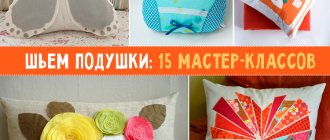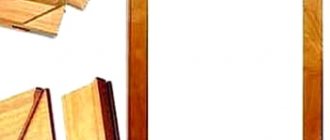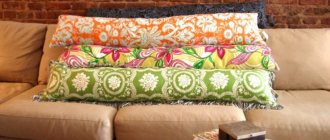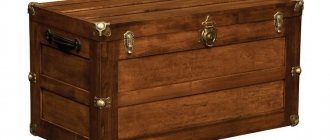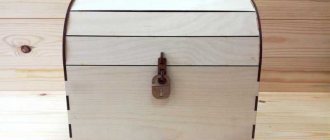An apron is a very common and practically unchanged piece of clothing from ancient times to the present day. There were aprons for men and women. Their roles were different - ceremonial, working, status, decorative. Nowadays, housewives do not often use an apron, finding a more modern alternative. But in vain! This is a very comfortable and cute piece of clothing. Moreover, even a schoolgirl can make an apron.
The technology of sewing an apron and its patterns is studied already in the 5th grade during labor lessons. This easy-to-make item is the perfect choice for learning sewing skills. In this article we will look at how to construct an apron drawing, as well as sewing several models.
History of apron transformation
Devices similar to aprons have been used since ancient times and were originally pieces of leather or fabric that were attached to the belt and were intended to cover nudity. Later, the functions of the apron were transformed; it began to determine the status of its owner and membership in a certain social group.
Having migrated into the wardrobe of artisans, the apron began to be used to protect against splashes and dirt when working on a potter's wheel, in a forge, in a slaughterhouse or on a construction site. An obligatory ritual attribute of the attire of a member of the society of free masons, better known as the Masonic lodge, was an apron.
Women's aprons
Initially, the apron was worn by men. An apron is perhaps the first thing from a man's wardrobe that women borrowed because it is convenient, functional and beautiful. Over the long history of its existence, the apron simultaneously decorated the exquisite clothes of aristocrats and made the dress of servants comfortable.
Village women, as a rule, had a large number of aprons, which they changed depending on their activity and social status.
Kitchen apron
Protecting kitchen walls from dirt and damage using ceramic tiles, glass panels or other material is also called an apron.
The housewife can easily decorate the interior of the kitchen by sewing curtains, napkins, a tablecloth with her own hands, and an apron for herself from leftover fabric.
For the skirt of such an apron you will need a remainder of fabric measuring about 40 by 60 cm, for the chest of the apron - a rectangular piece of fabric 20 by 30 cm. The size of the pockets is 20 by 20 cm. Taking into account the seam allowances for the pockets, you will need three flaps measuring 24 by 22 cm. For the belt and strap you will need approximately 2.5 meters of braid, 3 cm wide.
From a ready-made cotton scarf and two to three meters of finished braid, you can sew an apron for the kitchen in literally five minutes and without a pattern at all.
Note!
Knitted raglan - step-by-step instructions, patterns, recommendations. Photo review of the best works and new products from craftswomen
Knitting a shawl - step-by-step instructions for making a shawl with your own hands. Tips for beginners on knitting + photo reviews
Amigurumi ring ⭕: features of the amigurumi technique. Step-by-step DIY master class with simple knitting patterns + 180 photos
In one of the corners of a scarf measuring 45 by 45 cm, pierce two holes, stretch the ends of a 120 cm long ribbon through them and tie it into a bow. Sew two pieces of braid 50-60 cm long to the other two opposite corners of the scarf to tie at the back.
Materials and tools
Since the main purpose of a kitchen apron is to protect clothes and the body from dirt and oil splashes when preparing food, the fabric for the apron must meet certain requirements, namely, be wear-resistant and durable. But the most important thing is that it should withstand a large number of washes well. Since working in the kitchen is accompanied by high temperatures, it is also worth choosing the most breathable, natural material. The choice of fabric is a crucial moment, because, among other things, the finished item should look harmonious and fit the decor. Don't sacrifice aesthetics for practicality.
The most popular materials for sewing a kitchen apron:
- Teflon is quite expensive, but it does not absorb water and stains, and therefore is much easier to wash. Dries quickly and does not require ironing.
- Cotton is traditional and versatile, very comfortable to wear. It absorbs stains and therefore requires careful washing and wrinkles a lot.
- Linen - sewing aprons is most often made from this material, as it is natural and pleasant to use. Disadvantages: shrinks when washed and requires careful ironing.
- Denim is a denser fabric, considered less durable and more durable than cotton or linen.
To sew an apron, you can use mixed compositions: adding synthetics to natural materials makes it easier to wash the product and remove difficult stains. In addition, such fabrics last significantly longer - they are less susceptible to the influence of aggressive chemicals.
As for the color of the product, it should be universal. Light and plain fabrics are not entirely suitable, as even small stains are clearly visible on them. As an option, you can place dark inserts in the center of the apron. But a small print, such as a floral one, is best. Traditionally, these are the kind of aprons that were used in Russia for working in the kitchen.
To sew yourself, you will need a working sewing machine, fabric, matching threads, a ruler, and a piece of soap or chalk to make markings. The pattern for the kitchen apron is made on newspaper or graph paper. If you have experience, you can apply the design directly to the fabric; if you don’t have it, it’s better to take graph paper, it will be easiest to work with. You will also need safety pins to hold fabric and patterns together and to secure parts while working.
Cotton Teflon Linen Denim Tools Required
Apron as part of national clothing
Many peoples use an apron as part of their national costume: Czechs, Poles, Belarusians, Ukrainians. It is impossible to imagine the Munich Oktoberfest without beautiful German women sporting traditional costumes consisting of a white blouse, a lace-up bodice and a flirty apron worn over a wide skirt.
Festive women's national costumes of the Russian provinces included an apron, richly decorated with embroidery and lace. Symbols and figures embroidered on the apron served as a talisman.
Professional aprons
The apron is still professional clothing for cooks, bakers, waiters, maids, butchers, blacksmiths and cleaners. Canvas aprons are used by grinders, masons, acid-resistant aprons by etchers, and galvanizers.
In medicine, protective aprons with lead inserts are used to protect against radiation during radiographic examinations.
Decor
Kitchen aprons are rarely decorated, and if they are, they prefer the most practical options: several different fabrics, lace, ruffles, gathering or ribbons. Also, as decoration, they choose an unusual shape of pockets: in the form of a heart, a star, a flower. Men's models can be complemented with belts, metal fasteners, and buttons.
For children's aprons, you can use beads, rhinestones, and beautiful fabric appliqués. It should be understood that products with such voluminous elements will need to be washed by hand. Girls are sewn elegant multi-layered aprons, and simple models are decorated with bows, contrasting colored fabrics are used for inserts, painted with acrylic or a pattern is applied using decorative stitching. Sometimes embroidery is used to decorate simple plain aprons. Also, to please children, bib aprons are made in the shape of cartoon characters or the faces of funny animals.
Bibs for babies
Bibs and bibs are children's aprons that help the baby stay clean when he is still poorly able to perform independent actions.
Note!
- Knitted braids: simple patterns and the best master class for creating patterns with knitting needles. How to knit braids with your own hands + photo reviews
- Knitting booties for newborns: detailed patterns for knitting booties for beginners + 150 photo reviews of the best products
- Mittens - TOP 100 photos of the best creation ideas. Description of the technique + instructions for knitting mitts with your own hands for beginners
The pattern of a children's apron for babies is made on the basis of a rectangle measuring 16 by 28 cm:
- Set aside 4 cm from the top point, 2 cm to the right. Connect the resulting points.
- Place 4 cm down the midline of the bib and 5 cm from this point to the right and 4 cm down. Connect the resulting points with a smooth semicircular line - this will be the neckline.
- Also draw the outer line of the bib in a smooth semicircle.
When cutting, the fabric is folded in half along the grain, the pattern is pinned, and the bib is cut out without seam allowances. The sections are covered with bias tape or overcast stitches. The bib can be decorated with embroidery or appliqué.
More ideas
Very original aprons are made from ordinary women's large square scarves. They are arranged in a diamond shape, and the top corner is cut off. They are trimmed with bias tape of a suitable color and the strap and ties are made from it.
Now there are a lot of interesting models of this simple, but necessary in everyday use, item of clothing on sale. But if at home you have everything you need for your own tailoring, then why not? Such things are always closer to the body and heart than store-bought ones.
School apron
How romantic girls in school uniforms with aprons look in old photographs: from pre-revolutionary gymnasiums to Soviet times, a white apron was worn on holidays, and a black one was worn on weekdays.
Unfortunately, now in many schools there are no requirements for wearing a school uniform, but at the last bell, modern graduates often wear a traditional snow-white apron.
In Soviet schools, during home economics classes, all girls were taught to sew an apron. This technology is so simple that any graduate can create a pattern and sew an apron with her own hands in one or two evenings.
Types and features
There are three main apron models:
- one-piece, which is made from a single piece of fabric,
- with a stitched bib,
- without a bib (aka an apron).
An apron of any cut may or may not have pockets. Ties made in the form of ribbons, ribbons or straps can be attached behind the neck, belt or shoulders. Aprons of different silhouettes may differ in functionality .
There are several types of aprons according to their purpose:
- Kitchen. Designed to protect home clothes from stains during cooking. Often these are aprons with a bib or one-piece, since this cut provides better protection against contamination.
- School. Daily black and festive white aprons (sometimes with a bib) were part of the school uniform for girls during the Soviet era. Nowadays, girls traditionally wear such aprons to prom. Festive aprons are often made from beautiful fabrics and complemented with delicate lace and braid.
- Special. These include aprons for cooks, waiters, housewives, gardeners, shoemakers, mechanics, blacksmiths and representatives of other professions who deal with soiling substances. Some aprons for industrial work are made of PVC, which helps protect clothing from caustic chemicals and stubborn fats and oils.
- Decorative. An important detail of many national costumes. Richly decorated with embroidery, bright braid and ribbons.
Nowadays, for DIY sewing at home, a kitchen apron is most often chosen. Created with your own hands, this element of clothing adds coziness to your home, even if it is not used for its intended purpose, but acts as an interior item .
Tips for choosing a model for sewing a school apron with your own hands
Don't choose too expensive fabric. Guipure and satin fabrics are very elegant, but require experience when processing. It is better for a beginning craftswoman to choose cotton, cambric, linen, and use lace, stitching, ruffles, frills, and folds for decoration.
It is recommended to limit the amount of decor: several rows of flounces on the petticoat can turn a graduate into a doll on a teapot. “Expensive and rich” is not for the last call.
The right choice for a beginning seamstress would be to make an apron of a simple design with a trapezoidal chest and a rectangular bottom. As a trim, you can use frill or cambric lace - stitching.
The length of the apron should be 3-5 cm shorter than the main dress, it can be the same length as the dress, but in no case longer than it.
You can sew a test sample of a school apron with your own hands from cheap fabric, and make the necessary adjustments to the pattern after trying it on. Then the test apron can be used for household work in the kitchen.
For my husband's garage
Men love to tinker with their car in the garage or do some carpentry work at home. Therefore, clothes after garage training are often very dirty.
You can partially solve the problem if you sew protective equipment for your husband in the form of an apron with your own hands. For work, take a dense, coarser fabric.
Cut out either a whole canvas or a cut of two squares. The height is approximately 100-107, and the width is 100-109 centimeters. The straps are sewn. Cover the edges with bias tape.
They sew many pockets at the bottom of the hem so that small tools can be stored in them: screwdrivers, tape measures, etc. My husband will really like it: everything will be at hand in an apron.
Taking measurements for a school apron pattern
To create a pattern for a school apron, you will need to measure the circumference of the chest, waist, hips, the length of the straps, determine the height of the chest part of the apron, and the length of the lower part.
Before taking measurements, it is better to put on the school dress with which you plan to wear an apron and tie a ribbon at the waist.
Measurements are taken with a centimeter tape; it is better if another person does this, since it is difficult to take measurements on your own.
- Measure your waist circumference – FROM and hip circumference – ABOUT.
- Determine the length of the apron from the waist line to the bottom of the dress - DF.
- Measure the length of the straps from the front waistline to the back waistline, placing a centimeter over the shoulder - DB.
- Measure the distance between the protruding points of the chest - CG.
- Measure the distance between the chest line and the waist line - VG.
We sew aprons, aprons for the kitchen ourselves with bibs: ideas, styles and patterns
The advantages of such an apron:
- Fits well on the body
- You can sew additional pockets on the chest for storing things.
- Covers most of the body, preventing clean clothes from getting dirty.
IMPORTANT: You can find options for beautiful, simple and unusual aprons with bibs in the photographs and sketches below.
Options:
Patterns and models of aprons No. 1 Photos and patterns of modern aprons No. 2 Photos and patterns of modern aprons No. 3 Photos and patterns of modern aprons No. 4
Building a drawing of a school apron pattern
How to make a pattern for such an apron, which consists of five parts of a simple geometric shape and one complex part - a flounce:
The lower part of the apron, the so-called skirt, is a rectangle with width = OB and length = DF minus 5 cm. If a frill or lace is sewn along the bottom of the hem, then the width of the frill must be subtracted from DF. The difference between the volume of the hips and waist is laid in the folds.
The belt is a rectangular piece 3 cm wide and a length equal to OT plus 50-60 cm.
Straps - two rectangular parts 3-4 cm wide and equal to DB in length.
The breast is a trapezoid with a height equal to the size of the VG plus 5 cm, the width in the upper part is equal to the CG minus 2 cm, and in the lower part - the CG minus 4-5 cm.
It is better to determine the individual dimensions of the bib by applying the pattern to yourself. If the bib is too wide, the straps will constantly slide off the shoulders.
The most complex pattern of this model is the flounce on the apron straps. A master class that will show how easy it is to make a flounce pattern for this model of a school apron:
- On a separate sheet, draw a line equal to DB + 10-20 cm.
- From the middle of this line, restore a perpendicular equal to the desired width of the shuttlecock. You should not make the shuttlecock too wide, more than 12 cm, as this may make the schoolgirl’s figure seem disproportionate.
- Connect the points with a smooth line to create a figure in the form of a circle segment. Cut the segment from the rounded side into 8-10 parts and move their ends apart by 3-5 cm to obtain a shuttlecock drawing.
Step-by-step instructions taking into account the model
The main types and styles of aprons for the kitchen are based on a pattern with a cut-off bib. Depending on which model is selected, the sewing technology may differ. The general stage in this case is transferring the pattern onto the fabric. To do this, you can take tracing paper; it is easiest to transfer the drawing onto it. The parts are fixed with pins on the fabric so that it is convenient to mark the edges with special chalk, soap or pencil, and make seam allowances - 1.5–2 cm from the edge. The last step is to cut out all the details.
Simple apron without bib
This is the most common model and can be easily mastered by a beginner in sewing. To start work you need cut out parts. If a pocket is provided, it must be sewn to the main part of the product.
How to sew an apron step by step:
- Finish the edge of the product. This can be done using edging tape or simply folding the fabric.
- Then we sew the belt: it is applied right side to the top edge of the apron. The part can be basted or secured with needles. The seam is made at a distance of 1 cm from the edge.
- Next, the belt is folded in half with a 1 cm fold along the free side. It is advisable to sweep it away to make stitching easier.
- The width is also folded inward by 1 cm. The seam is made with an indentation of 0.1 cm from the edge.
Before sewing on a pocket, you need to consider the convenience and feasibility of its location. A simple apron is ready.
From the square
This is also an easy model to sew, as it does not require special skills or pattern making. To work, you will need a square of fabric, which will serve as the main part of the entire apron, and another additional piece of material to make ties and decorate the chest part. If desired, such an apron can be made with functional or decorative pockets.
How to sew a beautiful apron from a square step by step:
- The fabric is placed with one of the corners up - this will be the upper part of the apron.
- The corner is tucked towards the waist, then either cut off or decorated with a triangle of another material. In the second option: cut out a part of the required size with an increase of 1–1.5 cm on each side. The hem is made so that it is on the inside, the seam is made along the front side or along the overlay line, as an option - with an indentation of 0.1 cm.
- The remaining edges of the apron are treated with bias tape or the fabric is simply folded in half by 0.5–1 cm.
- Next, make the ties. They require two rectangles of fabric, 30 cm long and 6–7 cm wide. The parts need to be prepared, stitched, folded in half with a 1 cm fold on each side. The seam is made along the outside with an indentation of 0.1 cm from the edge. The upper strap is made in the same way, with its length equal to the width of the upper part of the bib + 6 cm.
The made ties are attached to the apron 6–8 cm above the corners, the place of fixation is marked during fitting. The square apron is ready, all that remains is to decorate it as desired.
Prepare the details of the product Place the square with one of the corners up, sew on a triangle in a contrasting color
Finish the edges of the main fabric. Sew decorative rectangles on the bottom sides.
Sew top strap
Make a pocket and attach it to the apron. Sew on strings.
From a man's shirt
This is a very simple model, you can sew it even without experience. For work you will need a large men's shirt. When wondering how to sew an apron from a shirt, you can consider several options. The easiest one is to use the front part of the product. Instead of a strap, the apron will have a collar, and the main part will protrude in front of the shirt. Here you can do without a pattern, simply cutting off “everything unnecessary.”
How to sew an apron for the kitchen with your own hands:
- Unstitch the seam connecting the front and back of the shirt.
- Remove sleeves.
- Mark the waistline when trying on. Draw two lines from it to the collar of the shirt.
- Trim them along the contour.
- Finish the edges with bias tape. You can also make ties from it.
The only drawback of this apron is the buttons. On the one hand, they perform a decorative function and make the apron stylish, on the other hand, they can be very annoying when hand washing the product.
Embroider the seam connecting the front and back parts of the shirt Cut off the sleeves Determine the waist line, make marks from it to the collar of the shirt Cut along the contour Finish the edges Cut out ties from the sleeve, sew to the apron
Add decor
Festive in the form of a gingerbread man
This very unusual apron can also be sewn without a pattern: just draw the outline of the character on the fabric. To do this, you need to round the chest piece so as to give it the shape of a gingerbread man, the arms are placed at the waist - strings are attached to them, the legs are also made from the bottom of the apron. Actions step by step:
- The edge of the product is treated with edging tape, and ties are made from it.
- The top strap can be adjustable. In this case, you will need to cut out a rectangle: width - 7 cm, length can be arbitrary (about 20 cm). You also need another smaller part to secure the rings that fix the size.
- The short element is folded in half and sewn to one of the edges of the chest part of the product. Long - simply sewn to the other edge. “Gingerbread” is ready.
To make the gingerbread man look more realistic, you can additionally attach button eyes and embroider a smile.
Shabby chic style
Shabby chic refers to the use of cute and elegant things. Aprons in this style are distinguished by a delicate, slightly faded color scheme. Lace, floral prints and pastel colors are ideal for them. To make a product in this style, you will need the most common apron pattern and decorative elements. Main stages:
- Adjust the pattern to your measurements.
- Attach it to the fabric, pin it with pins.
- Cut the fabric along the edge.
- Hem around the entire perimeter.
- Sew ready-made translucent ruffles or lace along the hem.
There can be as many frills as you like, it all depends on the imagination of the craftswoman. You can also use textile soft pink flowers in a vintage style as decoration.
Cut out two top pieces
Prepare three frills, sew on the top parts Connect the parts, decorate with buttons Sew ties on the sides Take a plain fabric, hem around the perimeter Prepare frills
Sew ruffles onto the apron Make ties Connect the top to the bottom Finished product
Men's with leather inserts
Such aprons can be seen in small coffee shops or cafes where men work behind the bar. A distinctive feature of the products is leather inserts. They can be used as top straps or apron straps, as ties and as pocket material. The model is simple and laconic, often based on a one-piece apron with a bib. To make it you will need nappa leather (can be replaced with artificial leather). How to sew a men's apron step by step:
- To begin, cut out the main piece from the fabric - 68 x 35 cm.
- Cut out leather elements for large and small pockets (56 x 20 and 15 x 12 cm).
- Prepare 4 ties measuring 90 cm x 5 mm. They can be fabric or leather.
- Cut out all the details without allowances.
- Place the small pocket on top of the large one and stitch it, stitching the resulting structure to the apron.
- Attach the ties.
Sewing a man's apron is not much different from the process of making a product for a woman. The only differences will be in the decor: for the stronger sex it should be brutal and laconic, for example, in the form of rivets or buckles.
Children's
An apron for a child can be sewn according to the same principle as for an adult. Of course, it is necessary to take measurements, according to which you can then construct a regular apron pattern. Children love everything bright and cheerful, so many craftswomen sew aprons from ready-made colored towels with interesting designs.
Making a children's kitchen apron is very simple, you will need:
- Cut a rectangle 45–60 cm wide (the length is calculated according to the child’s height), taking into account the allowance.
- Fold it in half lengthwise.
- In place of the top part, make a semicircular cutout approximately 10 cm wide.
- Finish the edges of the resulting workpiece with bias tape.
- Sew on the straps. The apron is ready.
Additionally, you can attach a decorative pocket. If the apron is intended for a girl, it can be decorated with lush frills.
Cut a rectangle of the required size Fold in half lengthwise, make a semicircular cutout for the apron Attach a decorative pocket Finish the edges
Sew straps
From old jeans
Denim aprons are usually made from a one-piece pattern using universal sizes. In order to cut a one-piece model, you will need jeans for a large man, from which you can cut a decent piece of fabric.
Sequence of steps on how to sew an apron for the kitchen with your own hands:
- Prepare the main part (length - 70 cm, width of the lower part - 50 cm, upper part - 30 cm).
- Carefully process all edges.
- Next, we sew the apron in the same way as the previous models: connect the parts and, if desired, sew on a pocket.
If you only have small pieces of old jeans, you can make an apron pattern with a cut-off bib - this will make it easier to arrange the pieces.
Prepare the main part Finish the edges Sew on the pockets
School
Aprons for school celebrations are sewn according to a pattern with a cut-off bib made of guipure or white cotton. Products can be decorated with lace, a small gather at the bottom or folds.
How to make an apron yourself:
- Cut out the top and bottom panels.
- Prepare straps and frills.
- Cut out the part for the belt: its length should be equal to half the waist circumference + approximately 5–10 cm on both sides for gathering.
- Finish the edges of the bottom pattern.
- Sew the top and bottom parts, while you can gather the fabric a little.
- Sew straps to the bib.
This is the lightest and simplest model of a school apron. If desired, you can take a more complex pattern, for example, with crossed straps.
Cut out the main panels Prepare the straps and frills Cut out the belt piece Finish the edges Sew the straps to the bib Connect the top and bottom parts
Ready apron
Option for sewing a school apron
Using the proposed pattern, you can sew an apron using lace instead of a frill; this will greatly facilitate finishing the edges of a frill or flounce, which poses a certain difficulty for beginning seamstresses.
- Perform decorative finishing on the bib and skirt - horizontal small folds.
- Fold up the top of the bib and stitch it.
- Connect the bib to the straps, placing it between the top and bottom of the straps, stitch the seam to the end of the straps, connecting them together.
- Place even folds on the lace and use a sewing machine to sew them to the top part of the straps. Iron the seam.
- Fold the bottom of the straps and hem them to the top, sewing carefully exactly at the edge of the connection with the lace.
- Place folds in the lace and sew them to the hem of the apron.
- Fold and stitch the sides of the apron skirt.
- Place pleats at the waist of the apron skirt, fold it with the bib and belt, and stitch.
- Determine where the straps are attached to the belt from the back. Sew the straps to the waistband.
Photo of an elegant school apron made according to the proposed pattern.
Choice of style
The styles of aprons are varied: there are models for different jobs and circumstances . First of all, the products are divided into men's, women's and children's. In turn, all of them can be either with or without a bib. In addition, aprons are offered with interesting decorative elements, funny designs or patterns, as well as with various inserts. Products come in leather and multi-layered, with ruffles and flounces, asymmetrical, with a yoke, in the shape of fairy tale and cartoon characters, as well as more classic styles, for example, an apron-sundress. Special mention should be made of professional aprons. They are worn by people in relevant professions: maids, florists, cooks, hairdressers, artists and potters. Their aprons are simple and functional.
The style primarily depends on who will wear the apron and why. Based on the purpose of the product, the color, material and appropriateness of the use of decorative elements are determined.

